In today's fast-paced digital landscape, businesses face an increasing number of security threats that can jeopardize sensitive information and trust. Developing a robust security incident response procedure is essential for mitigating risks and ensuring a swift, effective reaction to any incidents that may arise. This guide aims to provide you with a comprehensive letter template that outlines the critical components of a security incident response plan, helping you safeguard your organization. So, let's dive in and explore how you can strengthen your defenses and prepare for potential security breaches!
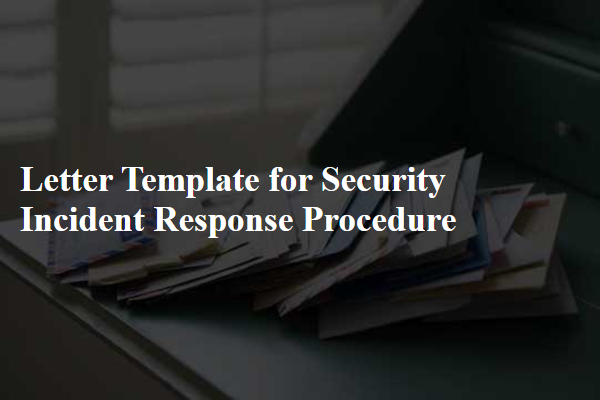
Incident Identification and Detection
Incident identification in security incident response involves recognizing the initial signs of a potential security breach or incident within an organization. Effective monitoring tools such as intrusion detection systems (IDS) can analyze network traffic patterns in real-time, helping to identify anomalies that may indicate unauthorized access. Additionally, log analysis from servers and applications, typically encompassing data from the last 30 days, can reveal unusual user activities or failed login attempts, serving as critical flags for incident detection. Furthermore, user reports of suspicious activities, especially in environments like the corporate network of a financial institution, play an essential role in identifying possible incidents, ensuring a timely response to mitigate potential damage. Regularly scheduled training and awareness programs, targeting employees within sectors such as healthcare or banking, can enhance the organization's ability to detect and report incidents swiftly, thereby strengthening its overall security posture.
Containment, Eradication, and Recovery
Rapid containment is crucial during a security incident to prevent further damage. Immediate actions involve isolating affected systems, such as servers or workstations, from the network, ensuring restricted access to sensitive data. Eradication follows, focusing on removing malware, unauthorized access points, or any vulnerabilities exploited during the incident. Detailed analysis of logs, such as system and firewall logs, helps identify the root cause of the breach. Recovery entails restoring systems from clean backups and ensuring all security patches are applied to prevent recurrence. Continuous monitoring for any anomalies post-recovery is essential to validate the security of restored systems, ultimately ensuring organizational resilience against future incidents.
Incident Notification and Escalation
In the realm of cybersecurity, the Incident Notification and Escalation procedure represents a critical framework for addressing security incidents. This procedure facilitates timely communication among stakeholders, including IT security teams, management, and external law enforcement agencies. During an incident, immediate reporting is paramount, often requiring the use of specific channels, such as the dedicated incident response hotline or electronic communication platforms within organizations. Each security incident is categorized by severity levels, with high-severity incidents necessitating faster escalation to upper management and specialized response teams. For example, data breaches compromising personally identifiable information (PII) of over 1,000 individuals must trigger an urgent response within 24 hours. Detailed documentation of the incident, including timelines, affected systems, and potential impact, is essential for both internal analysis and external reporting to regulatory bodies such as the GDPR in Europe or HIPAA in the United States. Such systematic approaches ensure a cohesive response, mitigate risks, and maintain organizational resilience in the face of potential cyber threats.
Documentation and Reporting
In the context of a security incident, proper documentation and reporting are crucial for effective incident response. Detailed records should include timestamps (e.g., the precise moment of detection, such as 2:15 PM on March 5, 2024) of when the incident occurred and when it was reported. The location (e.g., headquarters office, New York City) should be noted, providing context for the incident. Types of incidents, such as data breaches involving Personally Identifiable Information (PII), should be classified clearly. Additionally, the individuals involved (e.g., IT security team members, external law enforcement) must be documented, along with any steps taken to remediate the situation. Regular updates should be reported to stakeholders, ensuring that the timeline remains accurate and comprehensive (for example, submitting a summary report within 48 hours post-incident). Creating a log detailing actions taken during the incident response ensures accountability and helps in future prevention strategies.
Post-Incident Analysis and Improvement
Following a security incident, conducting a thorough post-incident analysis is essential for refining response procedures and enhancing future security measures. This phase involves documenting specific details of the incident, such as the breach point, affected systems, and timeframes. Key metrics, like the duration of the breach, the number of compromised accounts, and the data loss extent, must be assessed to understand the impact. Engaging in root cause analysis reveals systemic vulnerabilities within the security framework, allowing organizations to identify gaps in training, awareness, or technical defenses. Collaboration with departments such as IT and legal is critical for compliance and liability assessments. Implementing lessons learned translates into actionable improvements in technology, policy, and employee training, ensuring a proactive stance against potential future incidents. Regularly scheduled reviews of incident response plans, informed by these analyses, foster an agile security posture adaptable to evolving threat landscapes.
Letter Template For Security Incident Response Procedure Samples
Letter template of Internal Communication for Security Incident Response
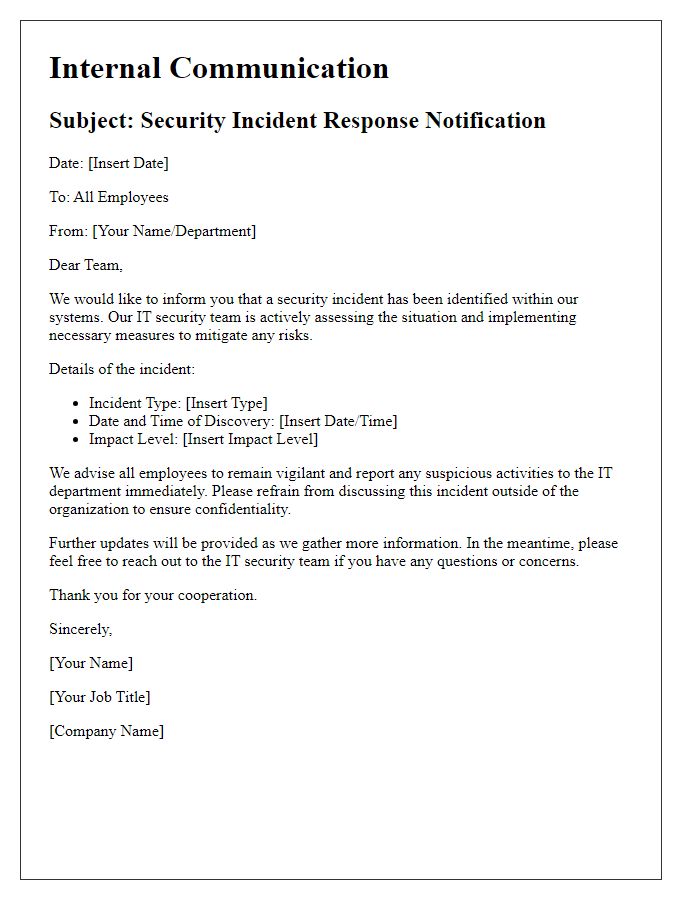

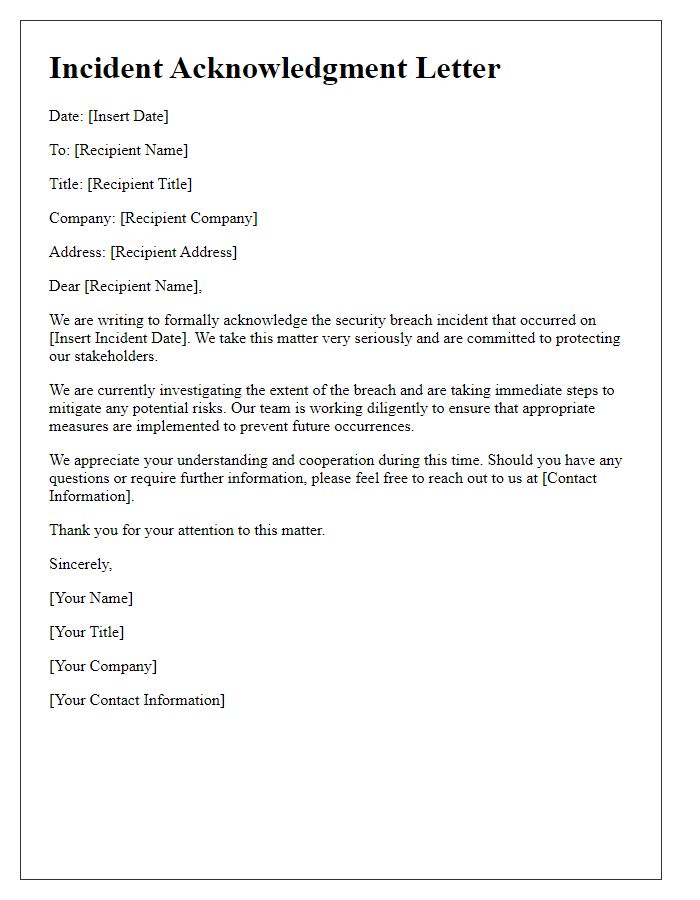
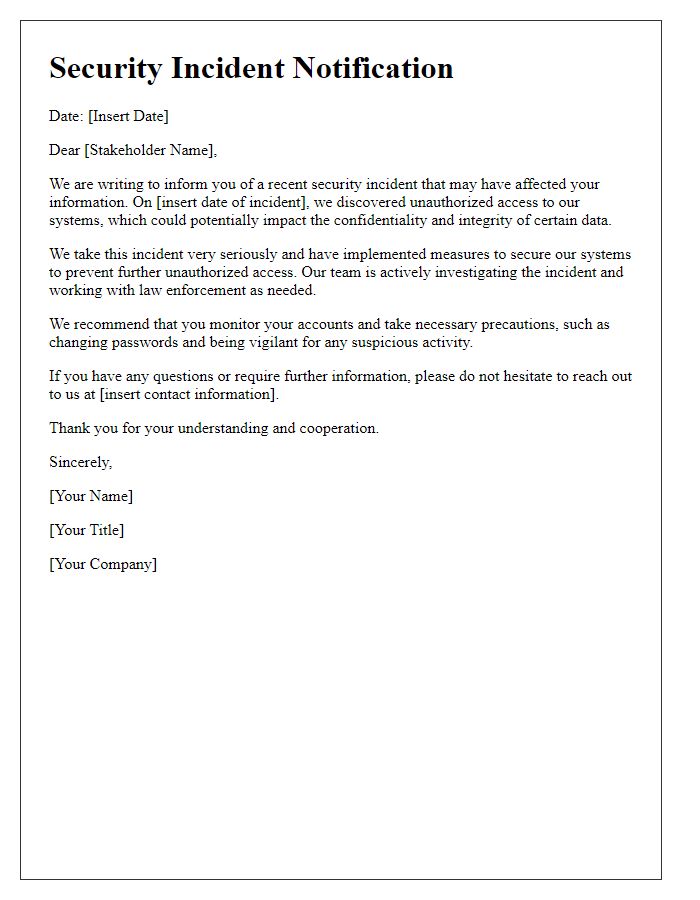
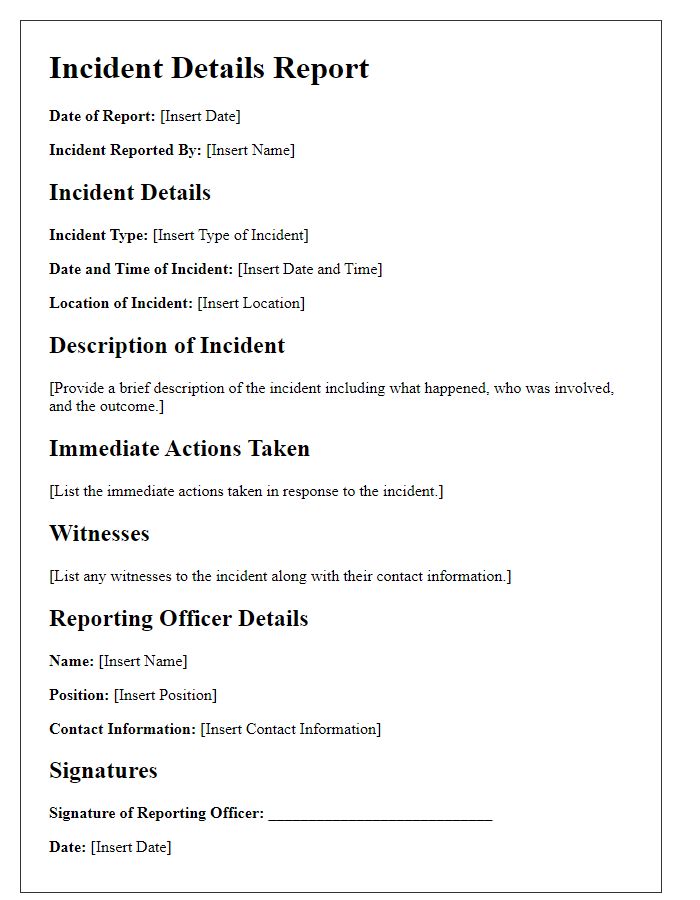
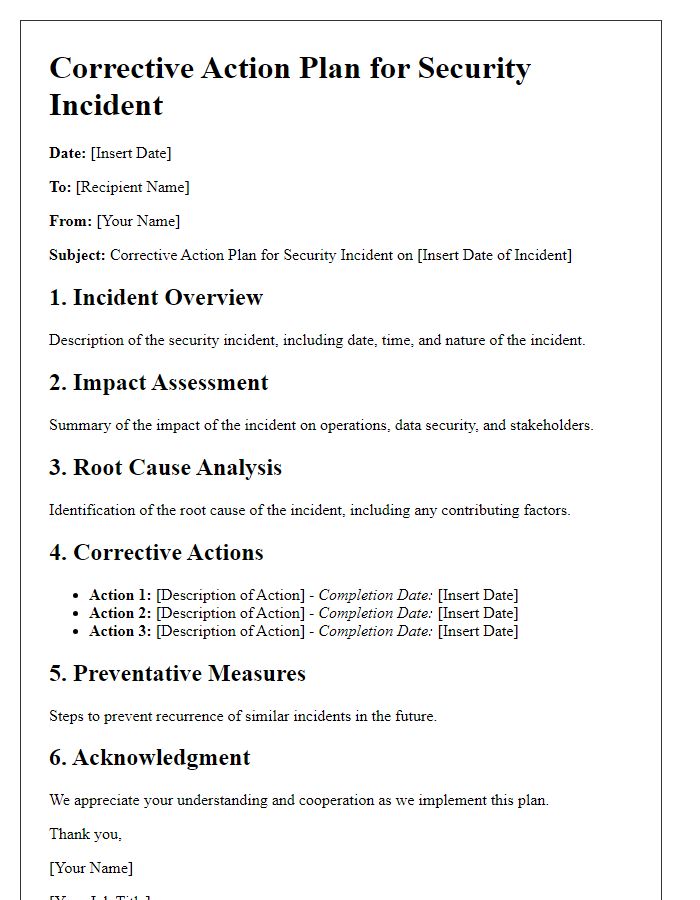
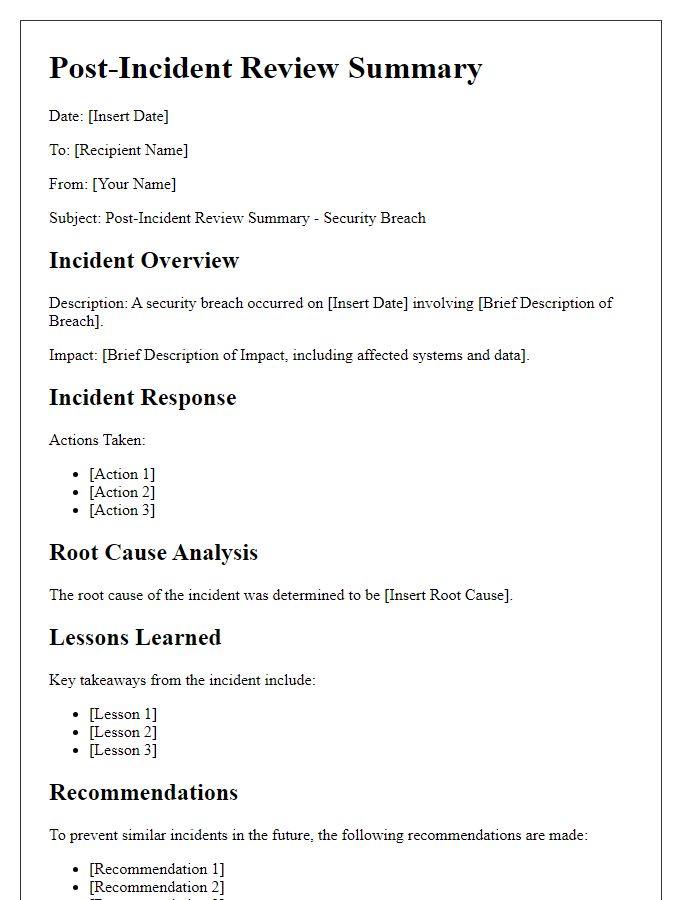
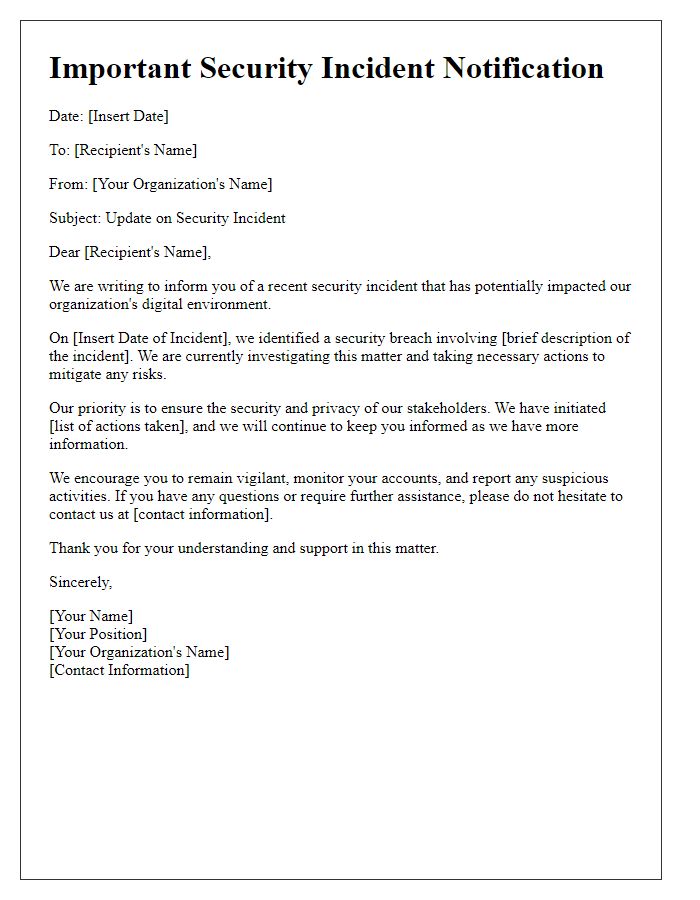
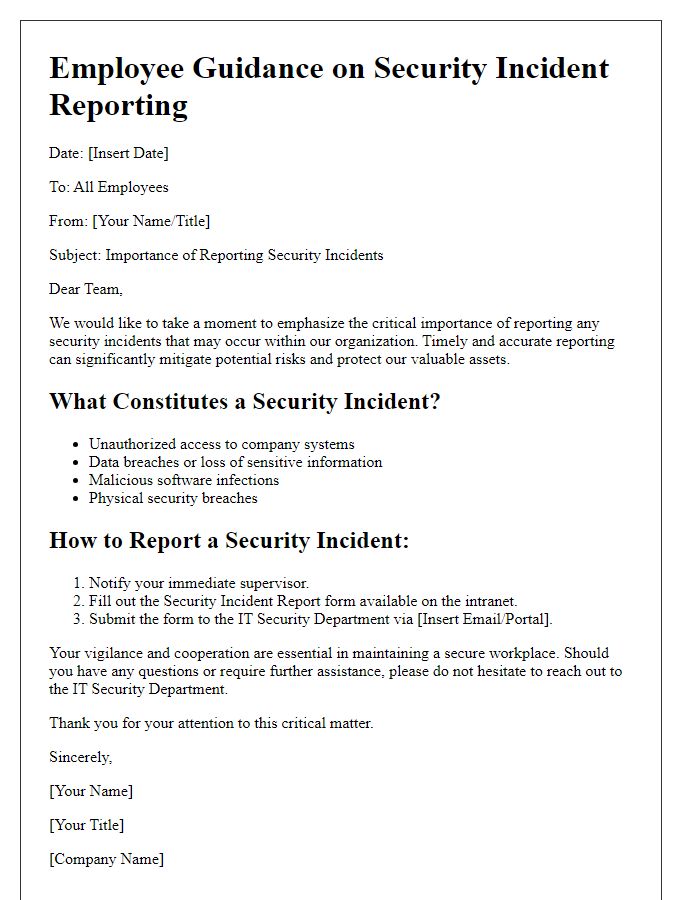
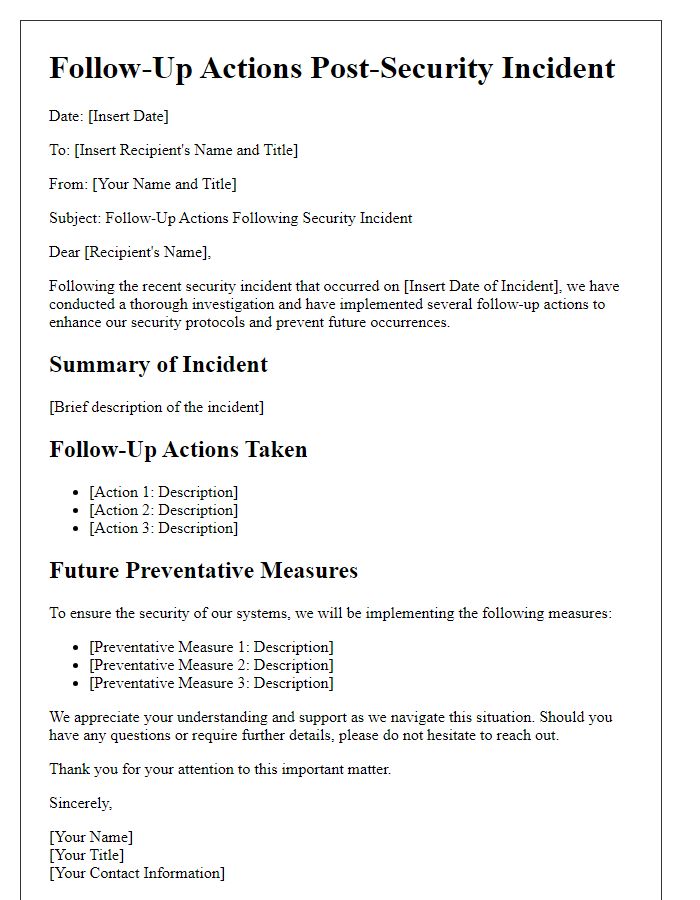
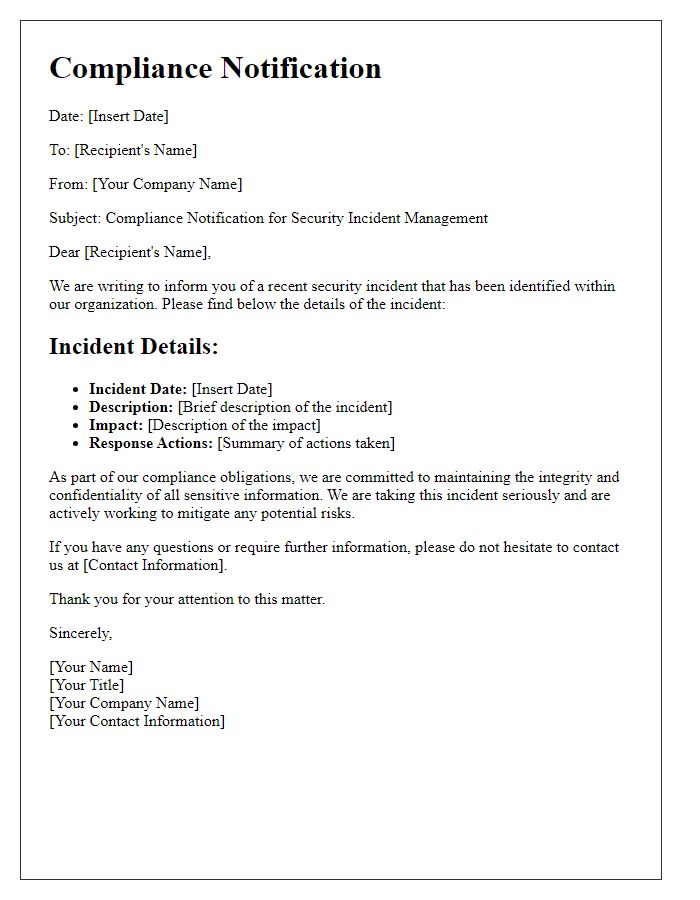


Comments